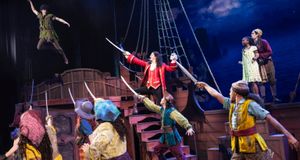Playing Cowboy
Published March 2023
By Greg Elwell | 7 min read
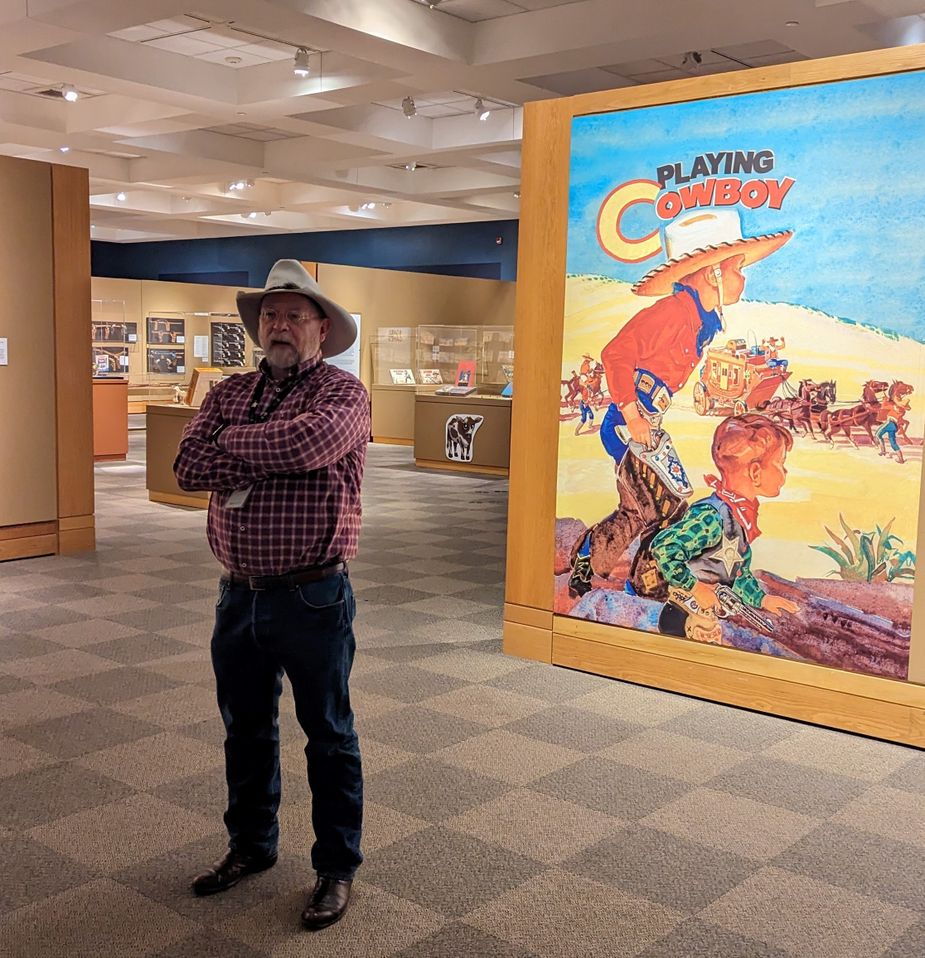
Curator Michael Grauer gives a tour of the new "Playing Cowboy" exhibit at the National Cowboy and Western Heritage Museum in Oklahoma City. Photo by Greg Elwell
"Grown men would come up and ask to borrow a cap gun would start spinning it," says McCasland Chair of Cowboy Culture and Curator of Cowboy Collections and Western Art Michael Grauer. "They turn into little kids before your eyes."
Inside the National Cowboy & Western Heritage Museum's new Playing Cowboy exhibit, it's not uncommon to see seventy-year-old men become seven years old before your eyes. Open through May 7, 2023, this collection comes from Johnie and Bob Terry from Springtown, Texas and explores the art and history of Western products aimed at children from the 1880s all the way through the Toy Story boom that began in the mid-'90s.
In fact, after the mechanical horse I was (sadly) not allowed to ride for obvious reasons, the first thing visitors to the exhibit will see if a trove of Toy Story memorabilia, costumes, and ephemera. It's easy to forget now, but in 1995, when the original movie was released, Woody the Cowboy was everywhere. Even my son, who was born fifteen years after the initial movie's premiere, wanted to wear clothes featuring Woody, Bullseye, and Jessie.
There's a reason it's at the forefront of the exhibit, says Grauer. Children and adults alike are most likely already familiar with the characters and it helps ease them into the rest of the collection, which is filled with some well-known and some not-so-known figures from the past.
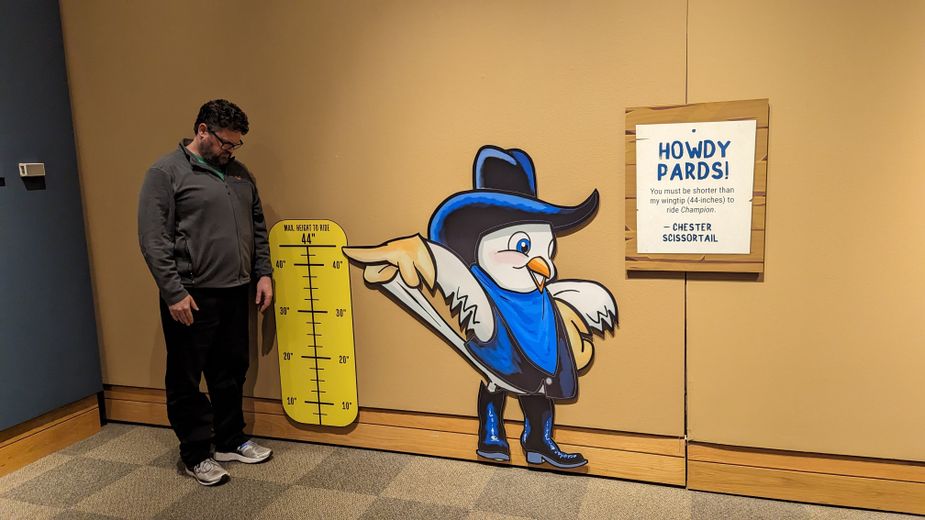
Web Editor Greg Elwell laments being too big to ride the mechanical horse at the "Playing Cowboy" exhibit. Visitors under 44 inches tall can ride for free. Photo by Daneka Allen
Filling the 7,500-square-foot space was no problem for the Terrys. In fact, only about one-sixth of the seventy boxes the museum received is on display . . . and that is a drop in the bucket compared to the collection in Springtown, which stretches from the floor to the ceiling joists.
One of the coolest sections of the exhibit is devoted to board games. While they aren't nearly so common these days, board games were one of many ways kids and adults alike could "play cowboy." One standout piece is the game The Big Trail, which Grauer points out is in many ways a precursor to the popular video game The Oregon Trail.
(For more on Western-themed video game fun, check out the exhibit You Have Died of Dysentery in the hallway leading to Playing Cowboy.)
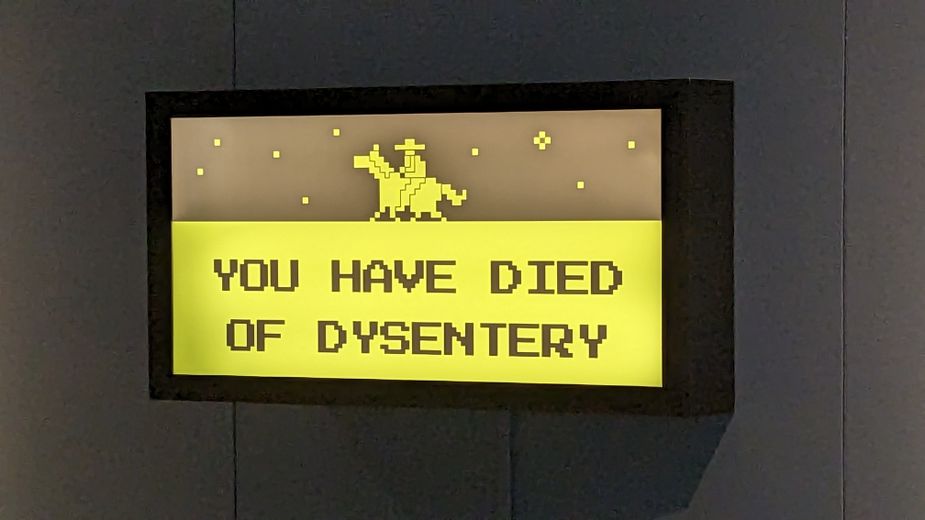
"You Have Died of Dysentery" explores the world of Western-themed video games. Photo by Greg Elwell
As a big fan of comic books, I was especially pleased to see a large section of the exhibit dedicated to the dozens and dozens of titles dedicated to the cowboy genre. As Grauer noted, the characters on the cover almost always had their guns drawn, but in the television shows of the same era, hardly anyone bled, much less died of a gunshot wound.
"The most that might happen is someone would get winged by a bullet and they'd wrap a bandage around their arm," he says.
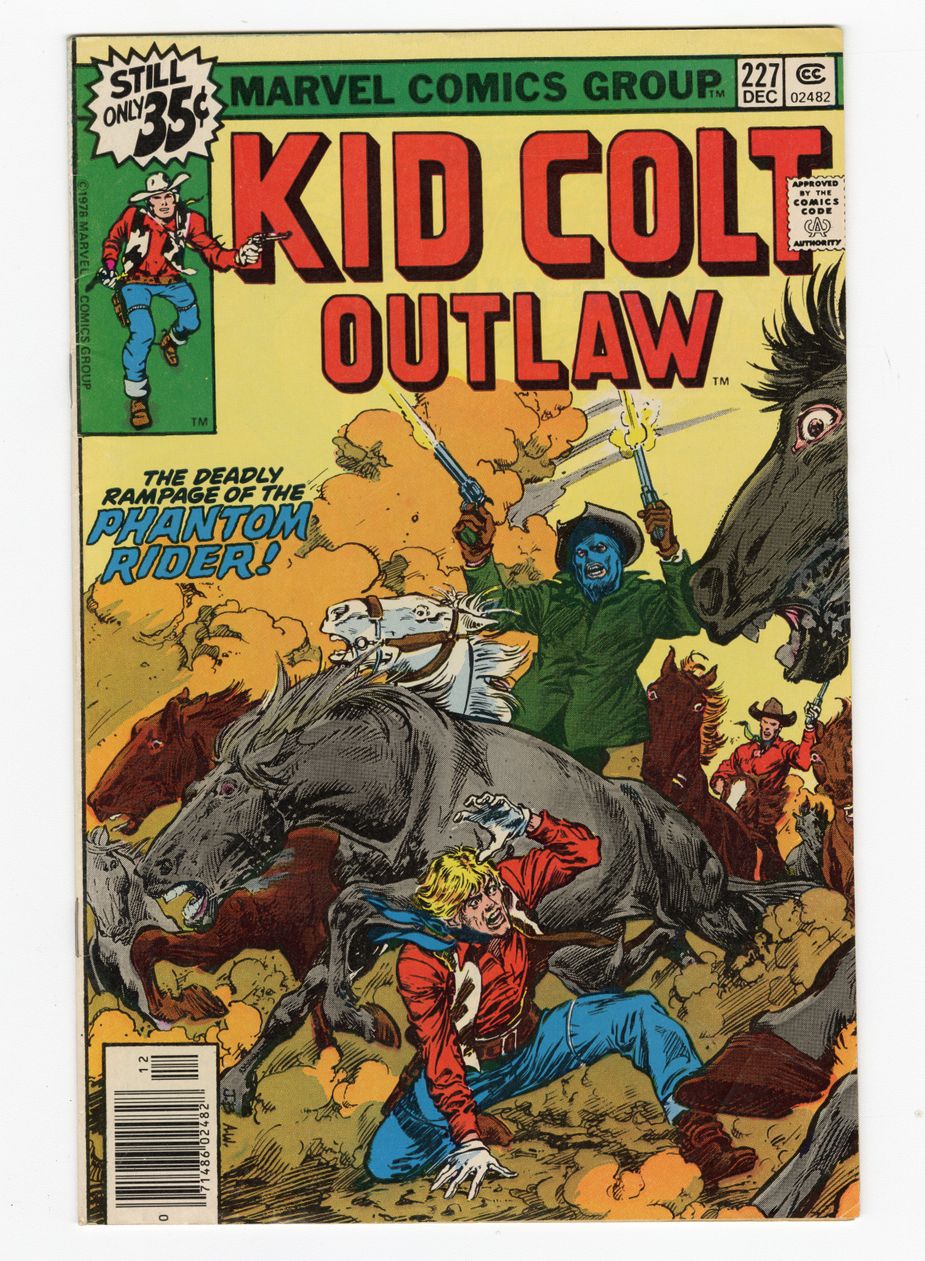
In the comic book section of the exhibit, kids can check out classic covers, like this issue of "Kid Colt Outlaw" from December 1978, Published by Marvel Comics Group, New York, NY
Despite the dearth of blood in the live-action Westerns at the time, when it comes to toys of the era, the gun was king. Playing Cowboy contains an entire room showcasing the wide variety of toy firearms available. One notable inclusion are a pair of guns manufactured during World War 2, when metal was reserved for the war effort. Instead, these guns were made of pressed sawdust and kept in a thin leather holster—leather being another commodity that was in short supply during the war.
Though green plastic army men were more abundant in my childhood, there were plenty of multi-colored plastic injection cowboy figures—some of which guests are allowed to play with in the exhibit.
While they aren't technically toys, there's no doubt many children were as stoked about their Roy Rogers and Lone Ranger lunchboxes as I was about my seldom-used Teenage Mutant Ninja Turtles lunchbox. As Grauer says, kids couldn't take their toys to school, so this was one way they could add an element of fun.
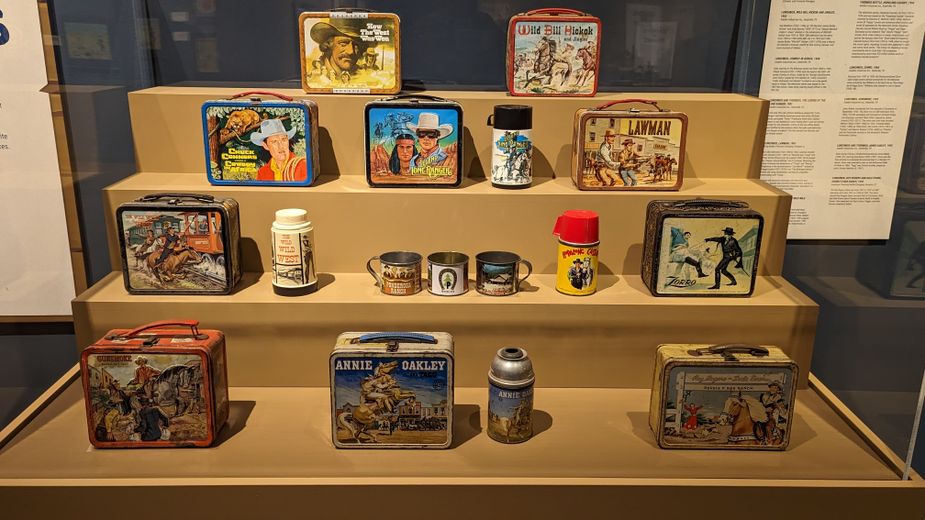
Lunch boxes were another way businesses sold Western culture to kids. Photo by Greg Elwell
Near the end of the exhibit, Grauer pointed out the transition from cowboy culture to space exploration in the wake of Sputnik—which is echoed in the first Toy Story film. But one look at the display of Buzz Lightyear figure and the cover of The American Magazine is enough to see that cowboys didn't really go away, the characters simply became space cowboys.
Playing Cowboy is on exhibit at the National Cowboy & Western Heritage Museum through May 7, 2023.
"Weekly Events Calendar, April 3-9, 2023"
"Tuesday Trivia: March 28, 2023"
You May Like
Weekly Events Calendar: March 17-24, 2025
This week in Oklahoma: Peter Pan flies in to Oklahoma City; an Irish feast in Claremore; and all-terrain madness in Disney.
This week in Oklahoma: Peter Pan flies in to Oklahoma City; an Irish feast in Claremore; and all-terrain madness in Disney.
Oklahoma Today Podcast: March 17, 2025
Oklahoma Arts Council executive director Amber Sharples joins the Oklahoma Today Podcast to talk about the reopening of the Betty Price G...
Oklahoma Arts Council executive director Amber Sharples joins the Oklahoma Today Podcast to talk about the reopening of the Betty Price Gallery at the Oklahoma State Capitol.
Five Oklahoma Spring Excursions
The days are lengthening and the temperatures are rising. With spring on the way in Oklahoma, here are a few things to look forward to.
The days are lengthening and the temperatures are rising. With spring on the way in Oklahoma, here are a few things to look forward to.


